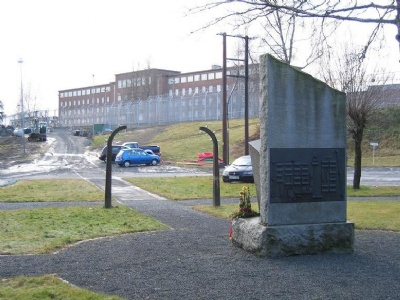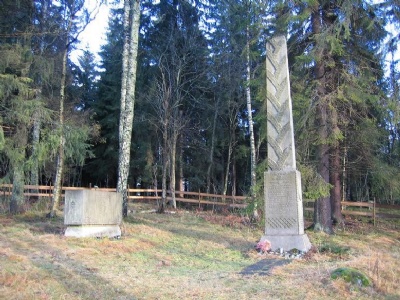Grini
Grini is located in Baerum municipality just outside Oslo, and in 1938 the construction of a women’s prison began almost finished when the Germans invaded Norway in April 1940. In connection with the occupation, the Germans took over the prison to imprison Norwegian prisoners of war. After Norway’s surrender in June 1940, these prisoners were transferred and the prison was taken over by the german army (Wehrmacht). In June 1941, the prison was taken over by the German Security Police (SIPO) who established a Polizeihäftlingslager for political opponents (both men and women). These had or were suspected of having links with the resistance movement or simply had expressed anti-german feelings. The first prisoners came from the closed camp Åneby about twenty kilometres north of Oslo. Grini was the largest of all six Polizeihäftlingslager established by the Germans in occupied Norway. By definition, neither Grini nor the other Polizeihäftlingslager in Norway were concentration camps, although the organization was very similar to the official concentration camps. Prisoners were also sent from other police camps in Norway to Grini. Some remained at Grini while others were deported to camps elsewhere.
By February 1942, the number of prisoners had increased to such an extent that the Germans had to build new barracks outside the prison. The prisoners were used for various jobs both inside and outside the camp. Grini was not a camp where prisoners were taken to be executed and there are only eight documented deaths. Six of them were executed on 21 July 1944 at a site just outside Grini. These were executed as a consequence of the attack on Hitler the day before. A little further away, two young men had been executed, July 5, 1944. But executions of prisoners at Grini were rare. In cases where someone was sentenced to death, they were executed either at Akershus fortress or in Trandum forest. At most, there were about 5,000 prisoners at the same time in Grini. In total during the camp’s existence there were about 19,000 prisoners. The head of RSHA (Reichs Central Security Agency) Reinhard Heydrich visited Grini in September 1941.
Current status: Partly preserved/demolished with museum (2011).
Location: 59°57'19.41" N 10°35'03.55" E
Get there: Car.
Follow up in books: Höhne, Heinz: The Order of the Death’s Head: The story of Hitler’s SS (1969).


Although Grini is a residential area in Baerum, the name Grini will always be associated with the camp, albeit not perhaps to the same extent as Dachau outside Munich. But in Norway, Grini has become a symbol of the German occupation. After the war, Grini continued to serve as a prison, All the barracks built outside the prison were demolished. Outside the prison there is a small museum. When I visited Grini in the autumn 2011, the prison was called Ila Prison, Detention- and Security Institution. At that time the prison’s most known prisoner was Anders Behring Breivik, who committed the terrorist attack in Oslo and Utöya, July 22, 2011. He has since then been transferred to another prison.